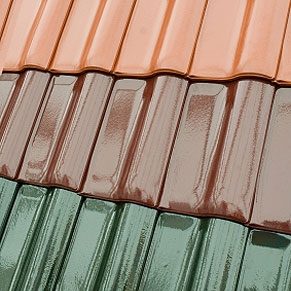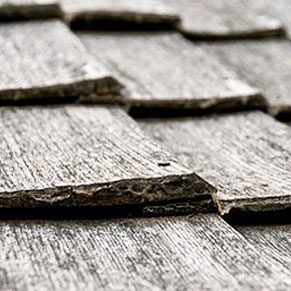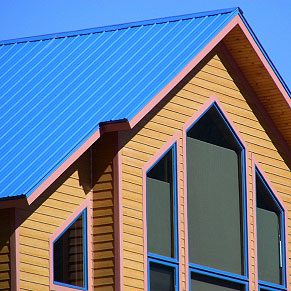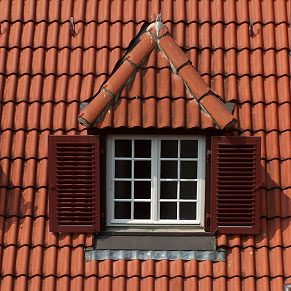
There’s a Wide Variety of Roofing Options
Roofing options have blossomed handsomely since the turn of the decade, affording the homeowner many interesting colors and textures; options that were simply unavailable or too impractical to consider before. What you’ll find here is a quick overview of three of the most interesting roofing options for your home and garden renovations, and where to find more information.

Roofing Options: Asphalt Shingles
The Old Dog Learns New Tricks
When I was a boy, children’s snow suits and asphalt roof shingles had a lot in common. They were both heavy and came in only two colors — dark green or black. Thankfully, home improvement choices have changed for the better.
- Today’s asphalt shingles afford lots of roofing options and room for creative choices, thanks to an explosion of available colours, textures and patterns.
- You can still get the usual “3-tab” design (the kind with the ubiquitous rectangular pattern), but don’t stop looking there.
- For slightly more money you can get shingles with irregular patterns cut along their bottom edges, creating an attractive random pattern that’s reminiscent of cedar shakes. An added benefit of this “no-tab” style of asphalt shingle is the absence of the factory-made cuts that define the 3-tab design. In locations with lots of pine trees, these cuts can trap fallen needles that eventually rot and speed deterioration of the shingles. No cuts mean longer shingle life in places like these.
- Several manufacturers offer premium asphalt shingle patterns that are made with a single base layer, capped by a second, irregular layer that has random cut outs. This two-layer approach adds texture to the roof by creating shadows. It looks great, especially on houses with a large, steep roof that’s visually prominent.
- If your current asphalt shingling job is the very last one you want to do for a while, you should consider using a super-durable product. These are made of the usual mixture of asphalt and colored granules, but include an extra measure fiberglass reinforcement. The best of these come with a 35-year warranty. Typical asphalt shingles have a 20 to 25 year life span.

Roofing Options: Metal Gets a Face Lift
Metal roofing materials are the chameleons of the building supply world. This roofing option has undergone as extensive a metamorphosis since popular acceptance, in this case more than 50 years ago.
- What started out as dull, grey sheets of steel has now taken on colorful, bullet-proof, factory-applied finishes, look-alike textures and camouflage coatings.
- You can now get sheets of metal roofing, for instance, that look like clay tile, but go up fast and can be supported by any standard roof structure.
- Products that include fine stone chips bonded to steel look something like shakes or slate, but go on more quickly and boast warranties as long as 50 years.

Roofing Options: Old World-Style Tiles
For centuries people have kept the rain off their heads with an interlocking network of baked clay tiles.
- Modern versions of this European roofing option are now also made of colored concrete, offering greater strength, solidity and long life spans, plus all the same good looks.
- Concrete tiles are also available in a shape that mimics slate and cedar shakes, if you prefer.
- Concrete tile roofing are solid and impressive, but they can’t be safely supported by all roof structures. Before you get too far into the planning process, go into your attic (or hire someone to) and measure the length, width and spacing of the angled wood members called rafters or sketch the triangular pattern of wood members that form the trusses, if that’s what you find there. With this information a concrete tile sales representative will tell you if this product is suitable for your home.
Getting More Info
The easiest way to get the latest information on availability and pricing of roofing products in your area is at a large building supply outlet near you.
- Few such places have roofing materials on display, so you’ll have to ask for pamphlets.
- Better-yet, ask to see their behind-the-counter catalog’s. These are typically three-ring binders provided by manufacturers for use by retail sales people. They’re not meant for public consumption, but few outlets will refuse you a look if you ask nicely.
- Even if you intend to have a professional provide and apply your new roof, a visit to a building supply yard is the best way to educate yourself about the possibilities.
Roofing Lingo
This short list will give you a fighting chance when confronted by roofing professionals who start throwing around the jargon.
- Square: An unit of roof area equal to 100 square feet.
- Valley: The trough-like intersection point between two adjoining roof lines. For example: The intersection point between a dormer and a main roof is a valley.
- Peak: Just as it sounds. The pointy bit at the top of an angled roof.
- Fascia: The horizontal face that surrounds the edges of a peaked roof.
- Drip Edge: An aluminum or steel strip that surrounds the perimeter of a roof and keeps moisture from seeping under roofing materials and damaging the roof structure.
For great articles, tips, inspiration and more, visit www.casaGURU.com-The smartest way to find licensed and insured house experts-from home stagers to contractors to home Inspectors and realtors.